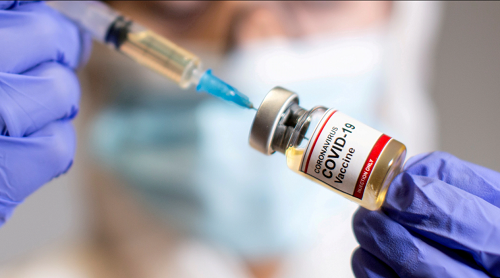
February 22, 2021 – COVID-19’s grip on the U.S. loosened again last week, prolonging a trend that began in early January. Infections, hospitalizations, and deaths are falling faster than most experts anticipated, forcing forecasters to lower projected figures twice in the past two weeks.
For instance, the Institute of Health Metrics and Evaluation (IHME) removed the new infection surge they had previously forecast for March and April. Earlier forecasts cited the impact of emerging variants – is this concern fading?
Here are several highlights from what occurred this past week:
Vaccinations and Immunity
This week’s deep freeze and heavy snowstorms wreaked havoc with the country’s vaccination efforts. The U.S. administered 1.2 million fewer doses this week than last — the equivalent of missing a day’s worth of jabs. Nonetheless, the 10.4 million jabs were the second-highest weekly total since we began vaccinating people in late-December.
Eight weeks into the process, the U.S. has administered more than 60 million doses, fully inoculating more than 17 million Americans. An estimated nearly one-third of Americans — 106 million — have some protection from COVID -19, either via injection or prior infection.
Infections
COVID-19 infections are free-falling in the U.S. since peaking in early-January. Estimated actual infections dropped by 75% in the last six weeks and were lower than at any time since early-October.
Testing
Testing activity backs-up this view of declining infections: Demand for testing fell by more than 25% from mid-December to this past week. Test-positivity dropped last week below the World Health Organization guideline (5%) — the first time we have bested this standard since mid-October. Last week, 20 tests were required to detect a single new case; in early-January, this had fallen to just 7.
Hospital Resources
Since the pandemic first broke, protecting the health care system from collapse has been of paramount importance. For several days in April, COVID-19 inpatients exceeded hospital bed capacity in Connecticut, New Jersey, and New York. More recently, hospitals in Arizona, California, and Utah faced similar existential crises. Hospitals full of COVID-19 patients not only stress our caregivers and critical supplies and equipment, but this situation also crowds out people needing care for other diseases and illnesses.
COVID-19 hospital occupancy has been cut in half in the past six weeks, with fewer COVID-19 patients in the hospital last week than any time since mid-November. Projected COVID-19 patient census falls for at least the next several weeks, following the pattern of declining infections.
While declining COVID-19 inpatients eased the healthcare system’s stress recently, a milder-than-normal flu season benefited the system as well. Typically, influenza cases drive hospital admissions throughout the winter. Many observers feared that even a regular flu season, in combination with COVID-19, could break the health care system. Instead, we have experienced the mildest flu season in many years. Flu visits usually would have peaked two weeks ago. Visits that week were 85% lower than for the comparable week last year and in the 2017-18 season.
Deaths with Coronavirus
Tragically, we have lost too many people to coronavirus. This week’s report of life expectancy declining by a full year troubles all of us.
Because of this, we find some comfort that deaths have now declined four straight weeks. Indeed, fewer of our friends and family passed away with COVID-19 this week than any week since early December.
Contributing writer:
Mark A. Van Sumeren, strategic advisor, Medical Devices & Integrated Delivery Networks
Health Industry Advisor LLC, provides a regular report on COVID-19 numbers for the health care industry.
For more information, or to sign up for the report, contact Mark at Mark.VanSumeren@HealthIndustryAdvisor.com; or visit www.HealthIndustryAdvisor.com.
